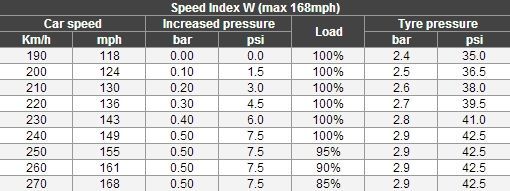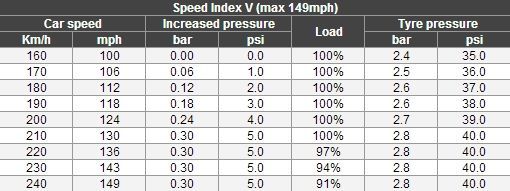Car tyre
Motorcycle tyre
Quad tyre
Heavy truck tyres
Agricultural tyres
Steel wheels
Alloy wheels
Package wheels + tyres
Snow chains
Balancing
Inflation
Tools and brackets
Repairs
Battery
Oils
Accessories
TPMS
Mounting - Tightening
Additives
Guide
Delivery and fitting
Pro
My account
Contact
Did you know that is is useful to adjust tyre pressure to drive at very high speeds? Of course, it is of limited interest in our countries where speed is highly regulated, but still....
We would like to bring in-depth information for the dare devils among you.
Because of the load they have to carry, tyre sidewalls bulge and flatten as they enter into contact with the road.
By deflection, is meant the measurement difference between two radii of the tyres. On the one hand the loaded radius ( between the center of the axle and the road) and the unloaded radius ( between the top of the tyre and the center of the wheel)
With a speed increase, the changes in the tyre shape become greater in amplitude, the phenomenon of defection increase. At the same time, the speed increase comes along with a decrease of the load capacity.
Tyre pressure should be set to be in line with your usual drving speed in order to guarantee performance and safety.
Let's take a simple example: a standard size tyre 215/50R17 91W In order to drive 1mile, this tyre will require approximatively 900 rotations. At 30 miles/hour, their are roughly 7 rotation every second; so that when you push the speed to 150miles/ hour, there are no less than 35 rotation per second. Your are submitting your tyre to tremendous stress .
The ETRTO (The European Tyre and Rim Technical Organization) recognized the role played by deflection in driving at high speeds and stressed the need to keep it to a minimum..
That is why the ETRTO is advising special pressure and load measures when driving at high speeds. When driving flat-out, is is recommended to keep your tyre inflation above the pressure recommended on the tyre sidewall.
The base is the normal pressure recommended by the manufacturer in normal driving conditions. Pressure should be gradually increased in relation to speed. In the example given below, the pressure of 34 psi recommended by the manufacturer for normal driving conditions may be increased by 1.5 psi for every 5miles/hour increase
Of course, unless you're driving a Formula 1 car, you can't adjust pressure while driving. Please beware of unresponsible behaviour..
+6miles/h =Increase your pressure by 1.5psi
Additionally, with the increase in driving speed , the load index indciated by a figure on the sidewall, decreases in 5% increments for every additional 10km/h .
+6miles/h = -5% load capacity
In our case, the tyre 215/50R17 91W with a standard load index could bear 680kg. The load capacity is reduced to 570kg when the same tyre is driving at 370km/h








Car tyre